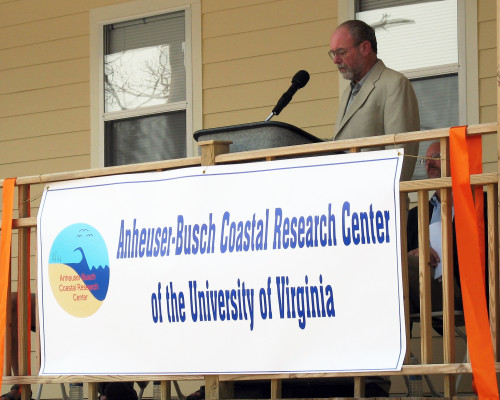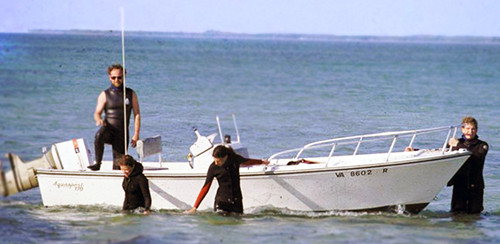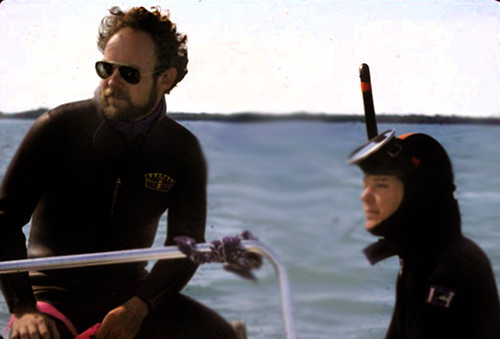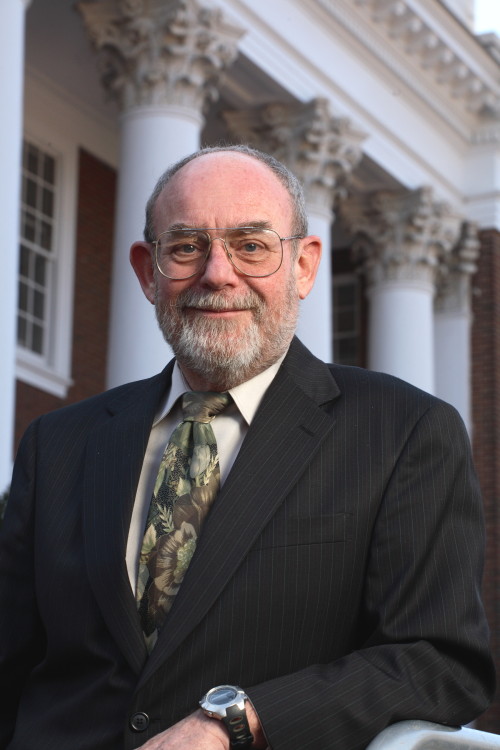In memory of Jay Zieman, University of Virginia seagrass ecologist
Bill Dennison ·Joseph "Jay" C. Zieman (1943-2015), my seagrass ecology colleague, died recently. I first met Jay in Biloxi, Mississippi in 1980 when my Master's thesis advisor C. Peter McRoy organized a workshop associated with the Seagrass Ecosystem Study, funded by the National Science Foundation as part of the International Decade of Ocean Exploration. Jay was one of the principal investigators in the Seagrass Ecosystem Study, which included a diversity of scientists including Peter McRoy (University of Alaska), Gordon Thayer (NOAA Beaufort Laboratory), John Ogden (Fairleigh Dickinson University), Ron Phillips (Seattle Pacific University), Cal McMillan & Pat Parker (University of Texas), Mike Klug & Bob Wetzel (Michigan State University), Rich Iverson (Florida State University) and Tom Fenchel (University of Aarhus). Jay had completed his PhD at the University of Miami, as a student of Ferguson Wood and joined the Department of Environmental Science, University of Virginia. Graduate students supported by the Seagrass Ecosystem Study included me, Susan Williams, Ted McConnaughy, Fred Short, Denby Lloyd, Mark Fonseca, Jud Kenworthy, Lee Cooper, Brian Fry, and Hitoshi Iizumi.
When I met Jay, there were only three seagrass books published and the journal Aquatic Botany had recently been launched. Jay co-wrote a chapter (Productivity in seagrasses: Methods and rates) with Bob Wetzel in one of these seminal seagrass books "Handbook of seagrass biology: An ecosystem perspective" edited by Ron Phillips and Peter McRoy (1980). Upon learning of Jay's death, I retrieved this book and leafed through Jay's chapter. I found lots of notes in the margin and recalled how much I used this chapter as a resource in my early career. I had noted his method of leaf tagging; Jay used a stapler to mark the wide leaves of the tropical seagrass, turtle grass (Thalassia testudinum). As the leaf elongated from its meristem near the horizontal stems (rhizomes), the staple was pushed up from the seafloor. I adapted this approach with the thinner eelgrass (Zostera marina) leaves that I was studying by punching the leaves with a syringe needle (and often my finger) and tracking the small brown scar that was formed.
One of my favorite Jay Zieman stories was when he was visiting the University of Virginia field laboratory on the Delmarva peninsula with a delegation of representatives from the Anheuser-Busch Company. They were providing a sizable endowment to underwrite the laboratory and when they went out for dinner, everyone ordered Anheuser-Busch produced beers. Jay was oblivious to this and asked for an imported beer, and his University of Virginia colleagues were kicking him under the table, but Jay went ahead drinking his imported beer.

I had a long series of discussions with Jay regarding a significant seagrass controversy regarding Florida Bay seagrasses. Beginning in 1987, a massive dieback of turtle grass occurred in central Florida Bay. The seagrass dieback was followed by an ecological cascade of environmental degradation. Blooms of tiny phytoplankton (pico-plankton) became chronic in the region of seagrass dieback, stimulated by the release of nutrients associated with the loss of seagrasses. Marine sponges, a key biofiltering component of the Florida Bay ecosystem, underwent a dieback as well. Juvenile spiny lobsters that sought shelter underneath marine sponges also experienced population declines, eventually affecting the fishery of adult lobsters. These profound changes in the Florida Bay ecosystem led to intense research interest as to the cause(s) of the initial seagrass loss. The controversy was in the various explanations of what caused the initial seagrass decline.
Jay and his students had the depth and breadth of experience in Florida Bay seagrass to address the issue of the decline, but there were various other scientists who had opinions as well. One pervasive opinion was that nutrient eutrophication caused the decline of Florida Bay seagrasses, based on the numerous global examples of over enrichment of nutrients that lead to seagrass declines. However, Jay argued that even though there were significant nutrient sources upstream of the Florida Everglades, the water diversions resulted in little of those nutrients making their way into central Florida Bay. Jay also argued that the declines came about during periods of little flow, in fact in hot, dry conditions. At one point, I actually found myself in the Florida Keys sitting between Jay and another colleague as they argued about the different theories of the seagrass decline. A lot of their disagreements were finding their way into the local newspapers, which was counter-productive in my view.

Jay was, above all else, a field ecologist. Jay spent considerable time in the field, and was a keen observer of nature. He surmised that the hot, hypersaline conditions in dense seagrass meadows of Florida Bay had stressed the plants. Jay observed that the seagrass meadows of Florida Bay were unnaturally dense due to historical overfishing of seagrass consumers like green sea turtles and manatees and due to a long period without significant hurricane activity. Jay was able to induce a Danish scientist, Ole Pedersen, to travel to Florida Bay and assay the ecophysiology of seagrasses under stress. Ole found that dissolved sulfide produced in seagrass sediments poisoned their growing centers (apical meristems), lending support to Jay's hypothesis. For many years, I served on the Florida Bay review panel and recall telling Jay after one of the scientific conferences that he had produced the most scientific impact without even presenting one paper. His colleagues and students had done the job quite well without him having to take the podium.

In spite of being based in Virginia, Jay actively maintained a research program in Florida for his entire career. Jay and his wife Rita had a house on Big Pine Key, and the University of Virginia maintained a field presence in the Florida Keys. Jay provided the mechanism for many University of Virginia students over four decades to be exposed to the diverse south Florida ecosystems with mangrove forests, seagrass meadows and coral reefs within a (long) day's drive from Virginia.
In summary, I very much enjoyed being Jay's colleague. He was a fine ecologist, incredibly generous and a lot of fun. Jay made a lasting contribution to tropical and temperate marine science and was one of the thought leaders in seagrass ecology. His legacy of excellent former students is impressive. Much of the research in Florida Bay and the Virginia Seaside Bays was directly or indirectly a result of Jay's efforts. The world is a diminished place without Jay Zieman.
Reference:
Zieman, J.C. and B. Wetzel. 1980. Productivity in seagrasses: Methods and rates. In R.C.. Phillips and C. P. McRoy (eds). Handbook of Seagrass Biology: An Ecosystem Perspective. New York & London: Garland STPM Press
Zieman, J. C., J. W. Fourqurean, and T. A. Frankovich. 1999. Seagrass Die-Off in Florida Bay: Long-Term Trends in Abundance and Growth of Turtle Grass, Thalassia testudinum. Estuaries 22(2B):460-470
About the author
Bill Dennison

Dr. Bill Dennison is a Professor of Marine Science and Vice President for Science Application at the University of Maryland Center for Environmental Science.
Next Post > Who ya gonna call? Recommendations for scientists who are called to action in a state of environmental emergency
Comments
-
Tom Frankovich 11 years ago
Thank you Bill,
Great tribute. Jay has been and will continue to be a great part of my life. He was so good at seeing the Big Picture. A true field ecologist. He inspired all of his students and encouraged us to spend a lot of time in the field observing nature and with seemingly never-ending support, he enabled us to pursue our ideas and interests wherever they led. I know parts of him will live on through the lives of his students and colleagues.
Tom Frankovich


